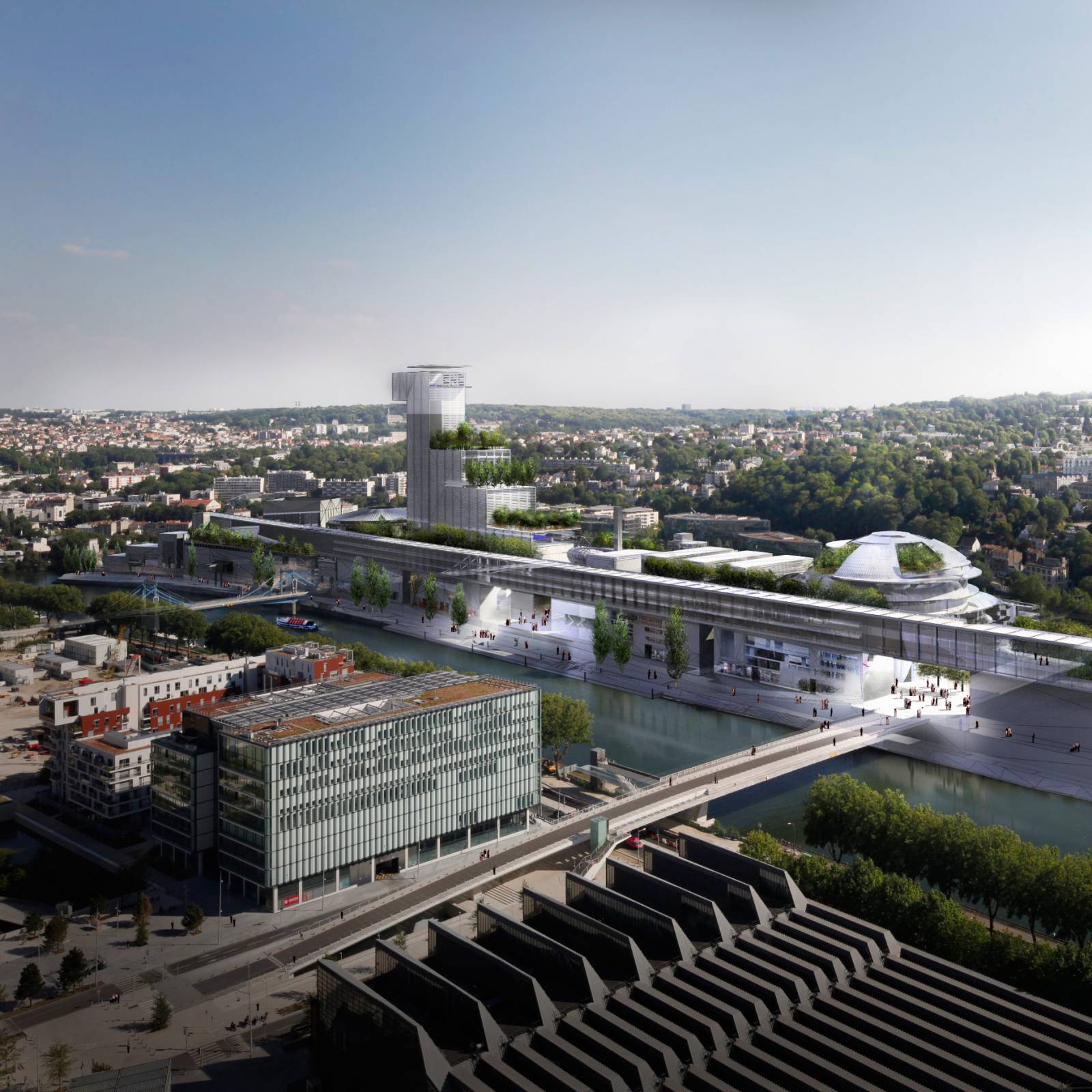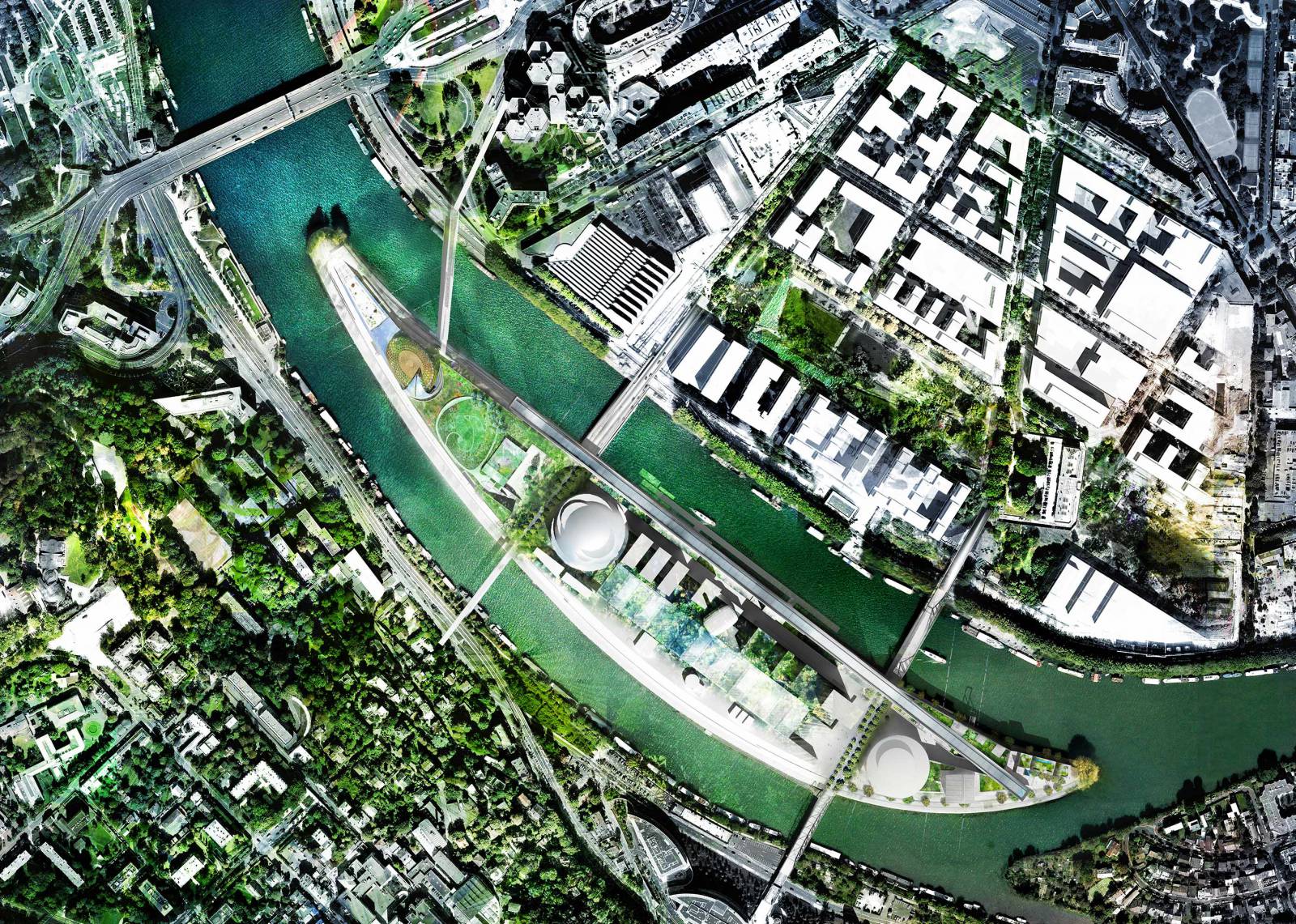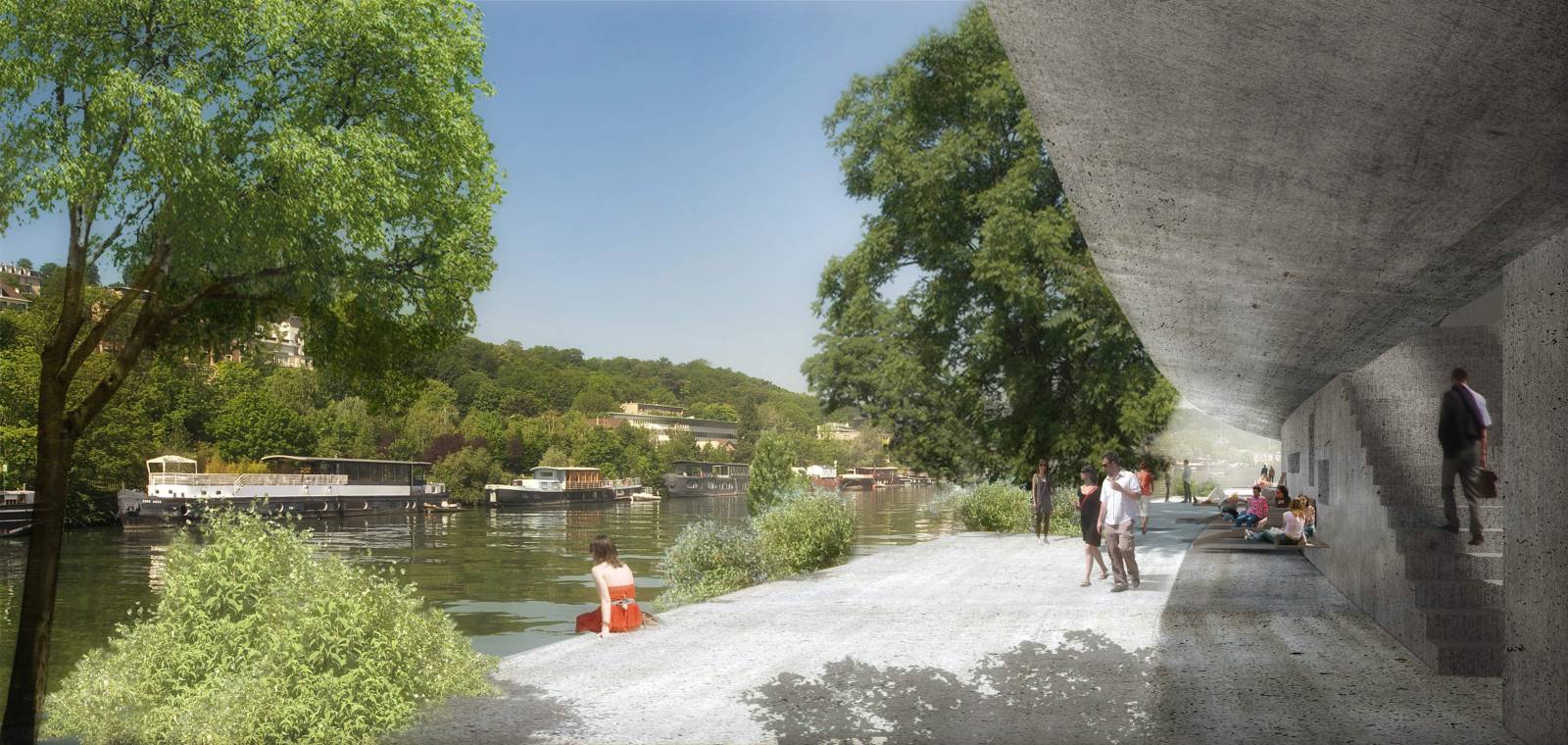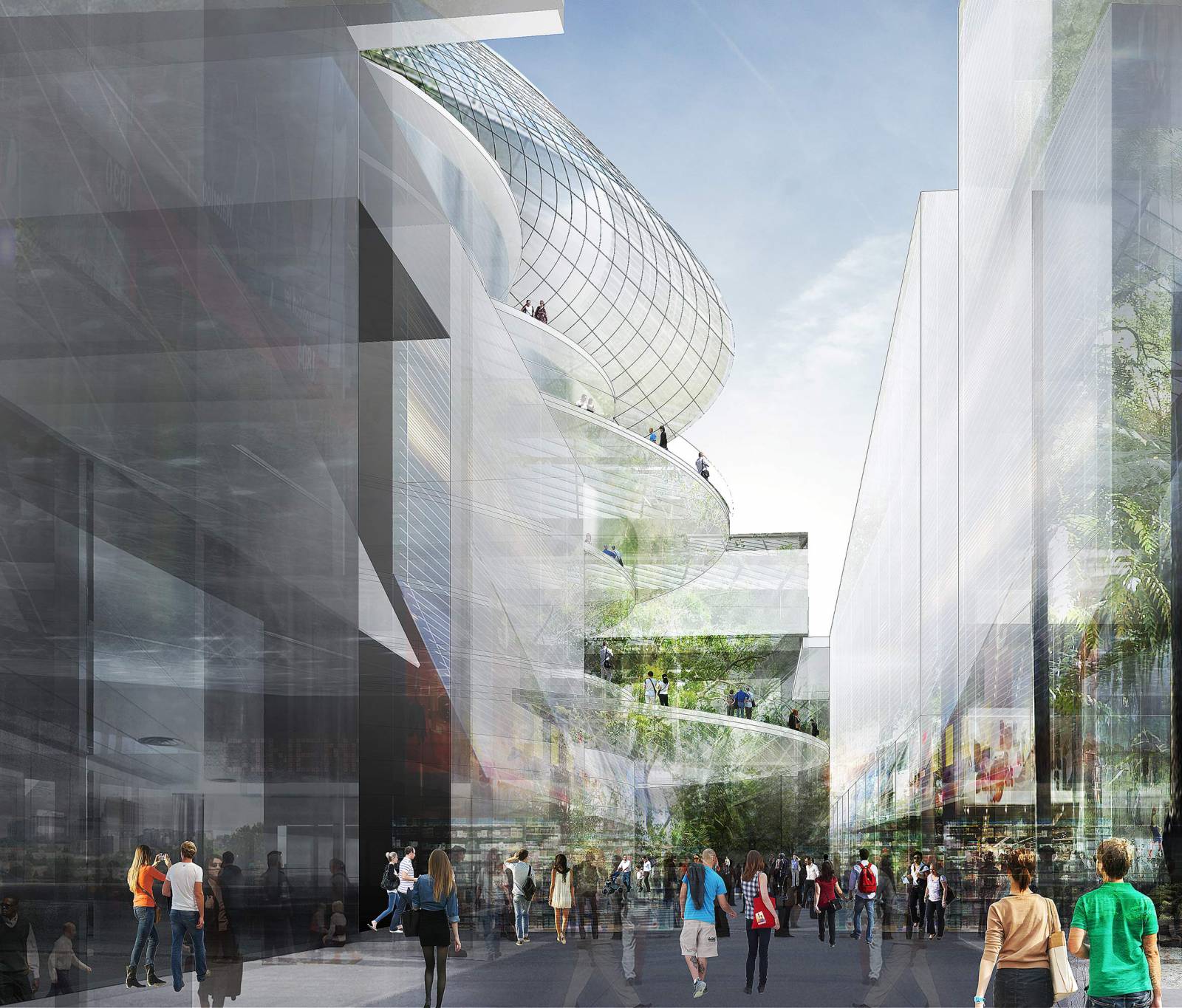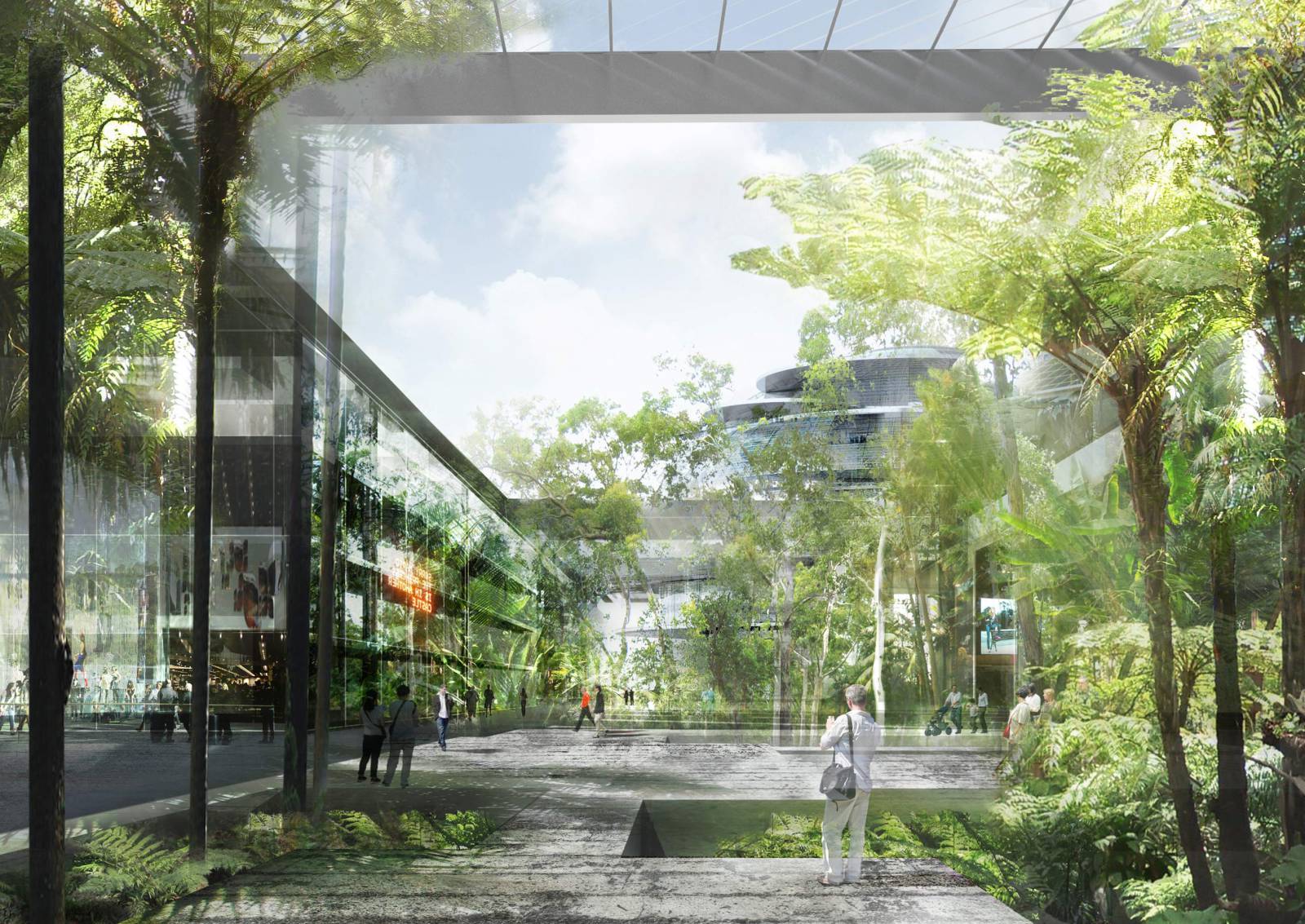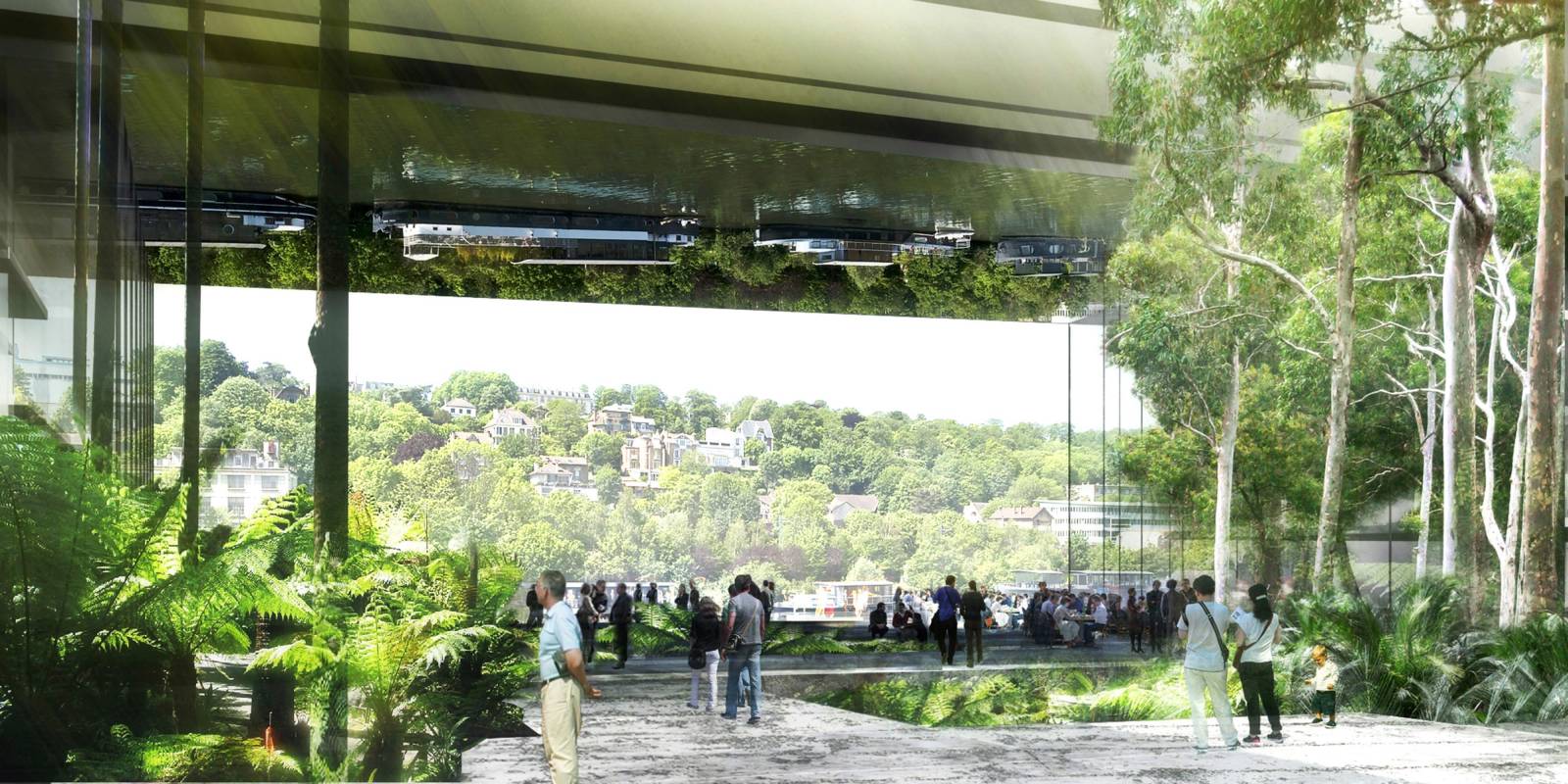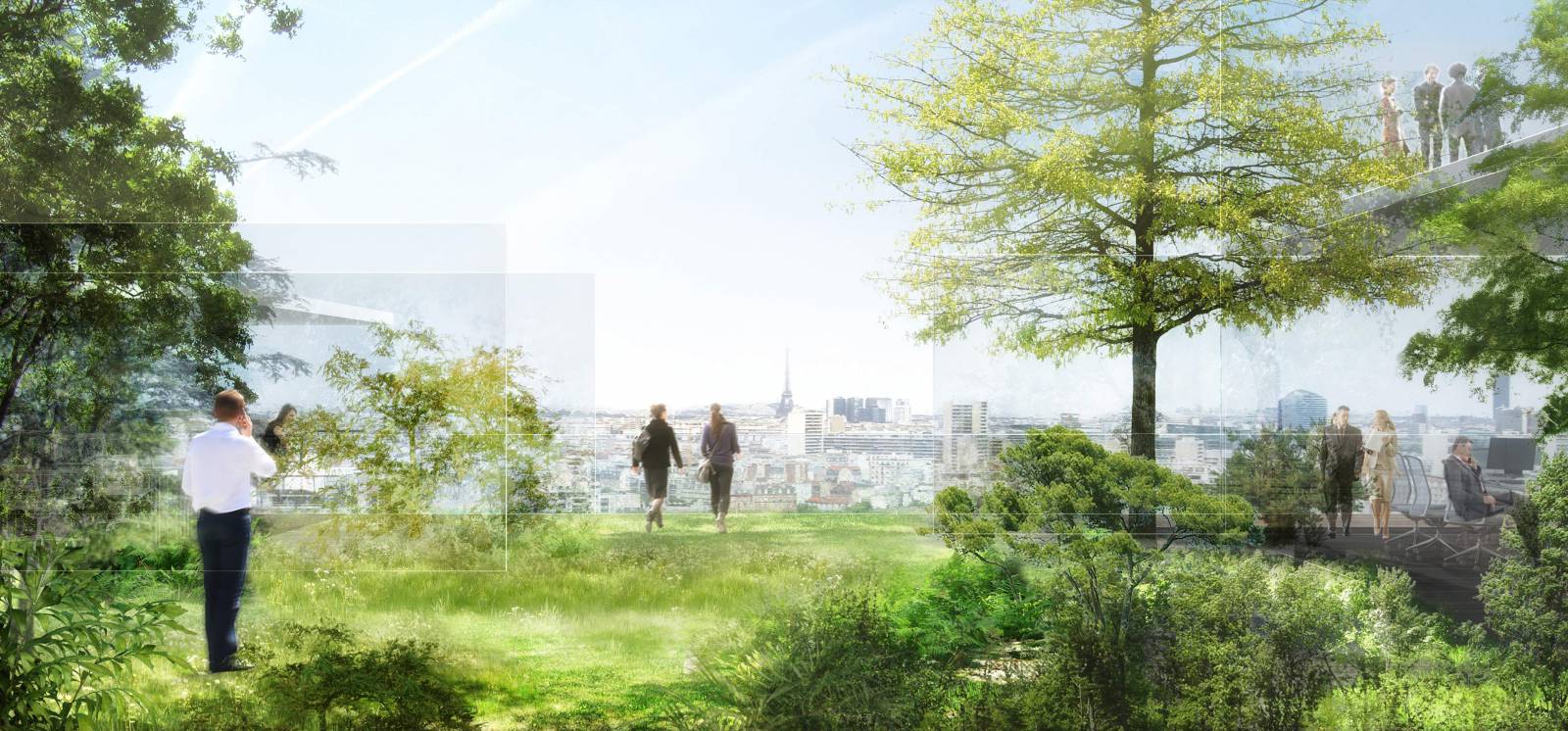Urban renewal project of l’Île Seguin
- Boulogne-Billancourt, France
From an industrial island to an industrious island
Social progress, the evolution in living conditions, the inclusion of leisure for a better working life : the Ile Seguin was, last century, a symbol of the change in the quality of life for the majority of French people. This vocation could be extended in the twenty-first century if the Ile Seguin were to become the first urban space in Paris to implement responsible and sustainable conditions of the kind called for, logically and politically, if we are to develop a metropolis that combines the pleasures of nature with those of urban living while respecting the Kyoto Protocol and thereby protecting the young and future generations.
The Ile Seguin has witnessed a series of prevarications and backflips in the decision-making process. The time has come for us to act on the fact that the future, fortunately, is not completely compromised. Unfortunately, the option of transforming the industrial structures is no longer available, but there is still time for us to set an exemple and be courageous in our handling of what is a historic site. Let’s incorporate on the Ile Seguin the intelligent attitudes that were already in evidence some years ago before coming to the fore in the studies on Greater Paris. Let’s show what an eco-district should look like, on an island where it really will be a small city within the city, an eco-city, perfectly identifiable and readable in its different contours, reflected in the Seine.
What would be the point of the Greater Paris initiative if the commitments set out in the 29 April 2009 presidential address to the Cité de l’architecture, failed to form the basis of our proposals for such a site? What would be the point of the Mayor of Boulogne’s rejection of an earlier plan that was incoherent and unambitious? Let’s make use of the time that has elapsed and of our fellow citizens’ growing awareness of the gravity of the issue of ecology–a dynamic clearly confirmed in the European elections– by proposing a project that reflects those aspirations.
This means that the Ile Seguin cannot be divided into lots, carved up into parcels of land where each property developer and his or her architect propose an independent, one-off project.
We have known for too long already that large-scale districts or large-scale centres just cannot be built from scratch on a blank slate.
We know that we have first to define a real urban program, one that’s complex and balanced and that guarantees life and its free expression at every moment. But we’ve seen what happens when we don’t plan typologies and morphologies on that scale: we end up with a place that has no soul, no roots, no synergy and no complexity, a place that has no mystery. Depth is a dimension that needs to be thought out in advance. The casting is even more important than for a Hollywood blockbuster since it has consequences that last a bit more than a couple of hours. What we need to do is bring together the head of urban strategy and the various elected representatives, architects and consultants of all stripes to work on scenarios that deal with a range of hypotheses and risks. It’s the relevance of the winning strategy that will create value and attractiveness. It’s the humanist and ecological dimension that will show the people of Boulogne the merits of a legitimate ambition.
We are aware of the current situation and of the absolute necessity of expanding on a number of points established in the feasibility study of 2001:
– Building up the island’s memory from its original base, a reinterpreted façade marked by the framing of the water, with openings onto the river, the riverbanks, and from one bank to the other.
– Highlighting the relationship to the water with an esplanade running along the shoreline.
– The sense of interiority and mystery, of surprise, associated with the island is largely due to its vast garden.
– The importance of inscribing the island and its contours within the landscape, and the island landscape within the landscape of Boulogne, Meudon, and Saint-Cloud.
But, also, of opening up the island’s views of Paris, Boulogne and the neighbouring forests for the public. The island needs to be a vibrant, attractive destination, one with a cultural program –shows, music, exhibitions – that is every bit as strong as its commercial program–designer fashion boutiques, bars, restaurants, galleries.
The island should be inhabited by three categories of people: those who work there, those passing through but staying temporarily, and those who live there. There need to be hotels as well as spaces such as artists’ studios, student and other accommodation, the number and type of which can be worked out. If a big central garden is to occupy most of the central urban space, that space will form one of the island’s microclimates, an indoor garden enclosed in glass that can be opened using solar energy – passive and active. The garden will be extended by vast terraces bigger than the apartment buildings that support them, largely planted with trees and associated with functions that take advantage of the views, day and night: fitness centres, restaurants, meeting-places…
The implementation of renewable energies will start with solar energy, banks of solar panels forming veritable ‘fields’ mainly covering the cultural spaces and partly covering some of the terraces. Heat exchange systems using water will be explored as well as geothermal energy.
The current L.U.P. is obviously meant as a guide only and will evolve, but the first study phase will make use of a large part of the legally constructible surfaces so as not to hold anything up. The initial garden design should also be materialized as swiftly as possible with Michel Desvigne; the architects currently working on the envelope will adapt their studies to developments in the project as they occur.
The ecological studies will allow us to determine density. From the point of view of sustainable development, if the island is served by the Greater Paris metro (ARC), the Paris metro and the tramways, it would be preferable to locate close to stations and stops any activities liable to reduce travel.
Only an ecological study on a Greater Paris scale will allow us to come up with figures. The reality of constructing a large-scale eco-district means we need to evaluate costs by incorporating the notion of overall cost (=cost of construction + social cost). This notion, which is vital for achieving the objectives of sustainability, will allow us to define the financial health of the operation, on the one hand, and to attract developers and buyers, on the other.
This approach is both pragmatic and ambitious at the same time, but it is also realistic. Its aim is to allow all the political, administrative, cultural and technical heads to lay claim, clearly and proudly, to objectives and strategies in harmony with the historic situation.
Jean Nouvel
